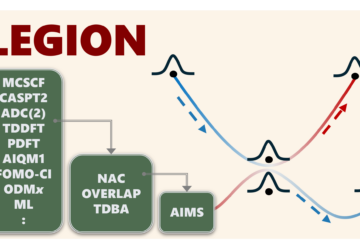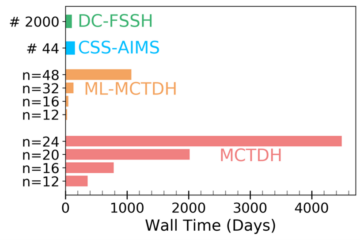An interface between GAMESS and Newton-X is available for surface hopping simulations.
Anyone who ever tried to make excited-state dynamics with CASSCF knows how painful it is. You prepare a nice active space, which perfectly describes your vertical excitation; then, as soon as dynamics starts, the orbital set changes, with rotations between the active and inactive spaces.
This is an intrinsic problem of MCSCF and there is not much to do about that.
In a recent publication [1], Aaron West, Theresa Windus (Iowa State), Hans Lischka (Texas Tech), and I investigate quantitatively these rotations for a simple test case. We proposed a practical diagnostic tool for the orbital rotations to be automatically used during the dynamics. We also showed for instance that it is not enough to monitor the total energy if you want to keep track of the orbitals rotations.
The paper also describes the recent implementation of MCSCF surface-hopping dynamics using a GAMESS/Newton-X interface.
Reference
[1] A. C. West, M. Barbatti, H. Lischka, T. L. Windus, Nonadiabatic dynamics study of methaniminium with ORMAS: Challenges of incomplete active spaces in dynamics simulations; Chem. Theor. Chem. doi:10.1016/j.comptc.2014.03.015 (2014).
doi:10.1016/j.comptc.2014.03.015



